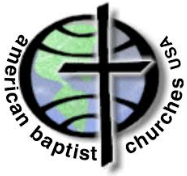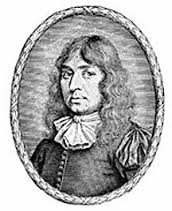
Baptists often trace their modern orgins to John Smyth who, ca 1609, came to believe in Believers' Baptism. Smyth, along with others had separated themselves (over the issue of Baptism) from a Separatist church in Holland (which in 1620 relocated to Plimouth in the New World). He is often called the Sebaptist as he baptized himself.
The story of the First Baptist Church of Boston traces back to the year 1651 when Obadiah Holmes (a glassmaker from Rhode Island) was whipped for being a Baptist.
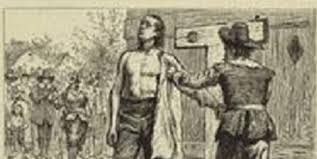
This took place in Boston at the site better known for the Boston Massacre of March, 1770
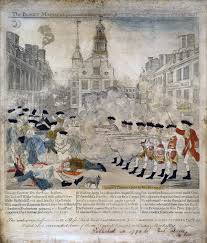
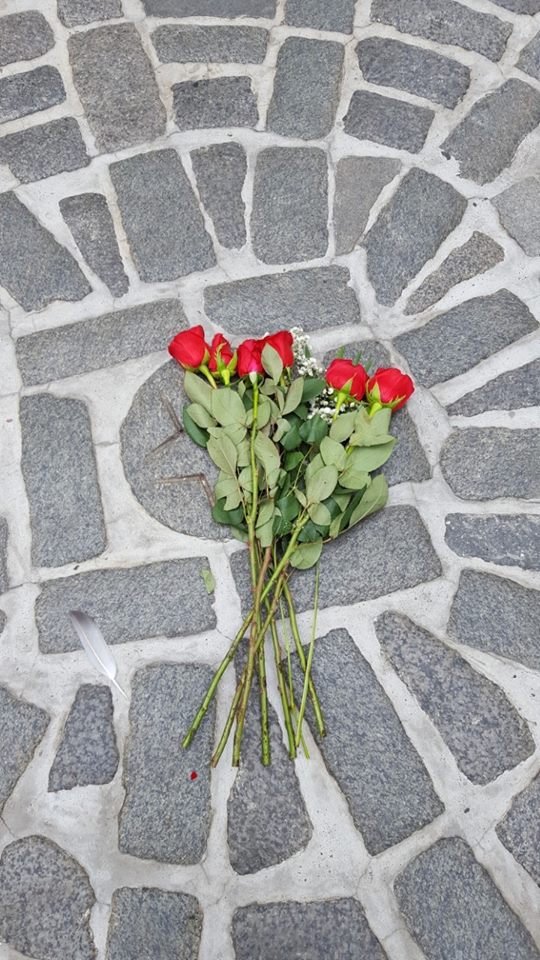
Obadiah Holmes, after being beaten "With a three coarded whip, giving me therewith thirty strokes" reponded "you have struck me as with roses."
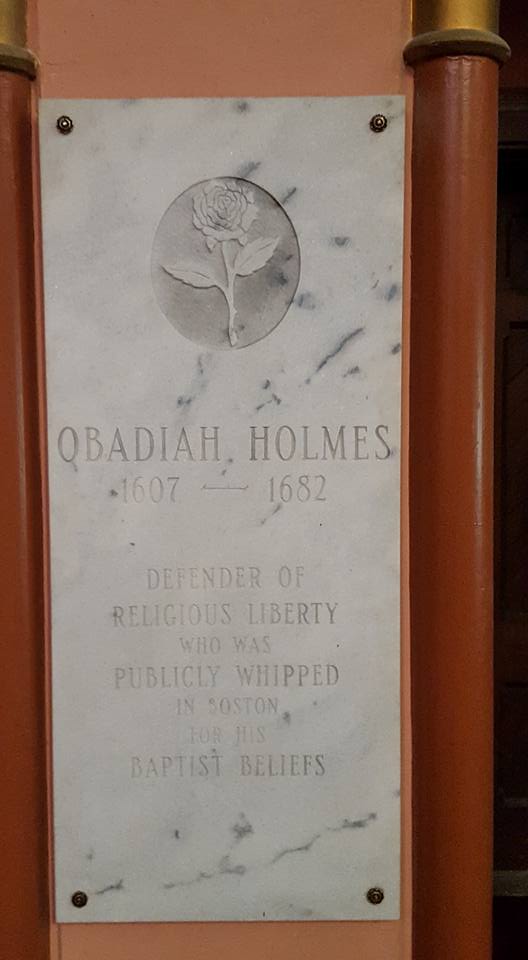
This event is memorialized at the First Baptist Church by a marble plaque, located near the base of the tower upon which is the face of Obadiah's Holmes' Great-Great-Great-Great-Great Grandson: Abraham Lincoln.
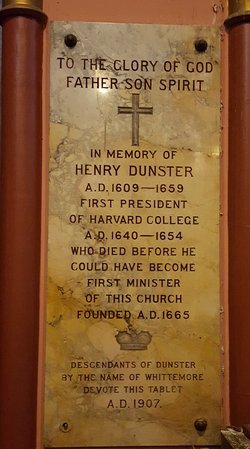
Among the witnesses of Holmes' whipping was Henry Dunster, who was the first President of Harvard College. Dunster was so moved that he changed his beliefs about Baptism, so that in 1654 he was fired from Harvard for refusing to allow his infant child to be baptized. Dunster was a close friend and mentor to Thomas Goold, who would become the founder of the First Baptist Church of Boston.
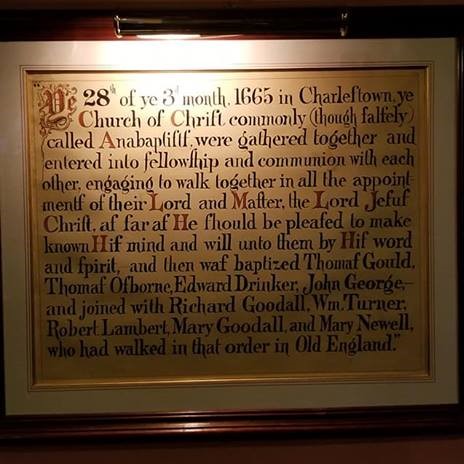
The first documented gathering of what was to become the First Baptist Church of Boston occurred in 1663 on November 8 (Old Style, November 18 New Styles) at the home of Thomas Goold in Charlestown, Massachusetts.
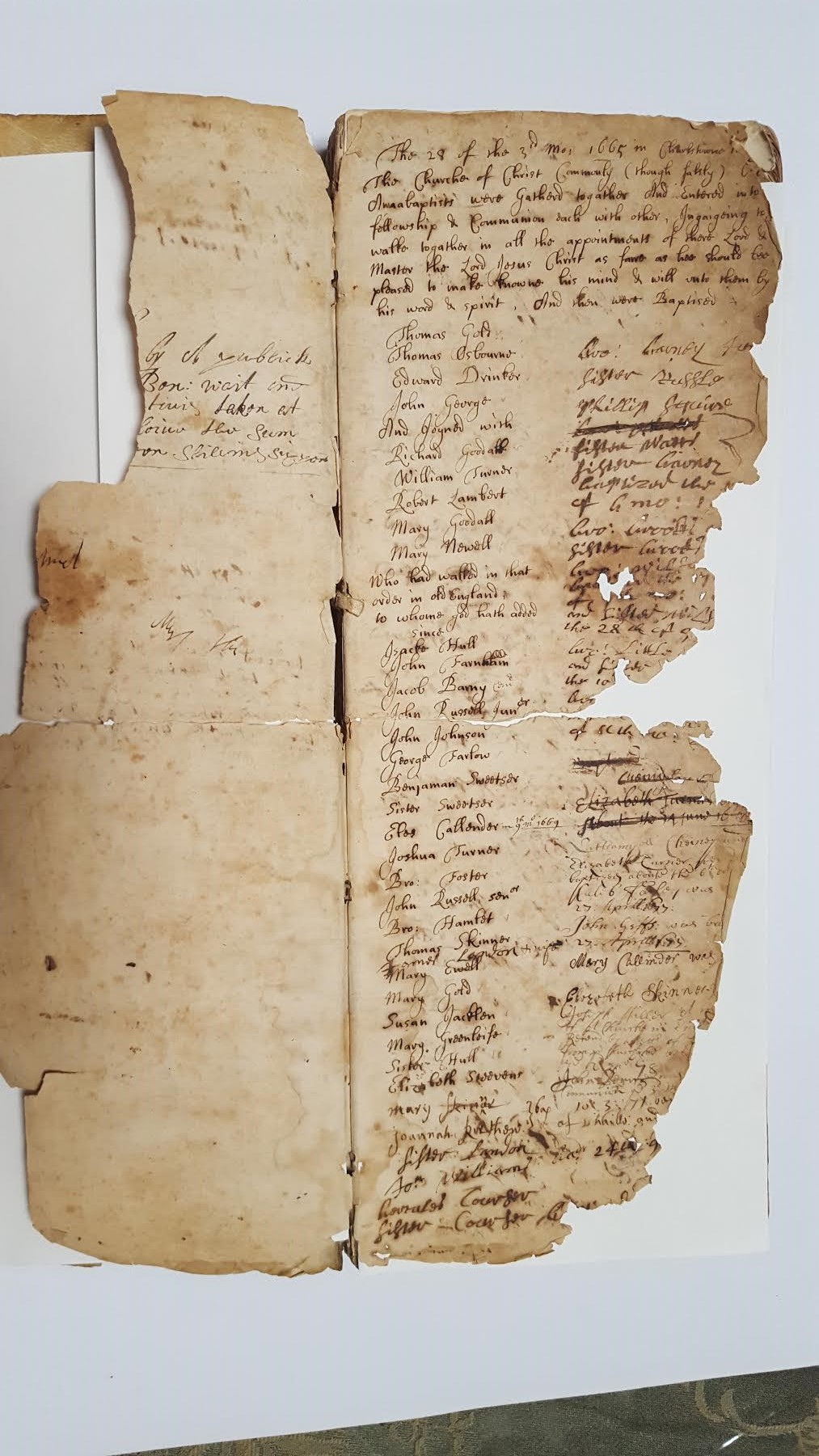
The 28 of the 3d mo. 1665 [New Style: June 7, 1665] in Charlestowne, Massachusetts, the Church of Christ, commonly (though falsely) called Anabaptists were gathered together And entered into fellowship & communion with each other, Ingaigeing to walke together in all the appointments of there Lord & Master the Lord Jesus Christ as farre as hee should be pleased to make known his mind & will unto them by his word & Spirit,
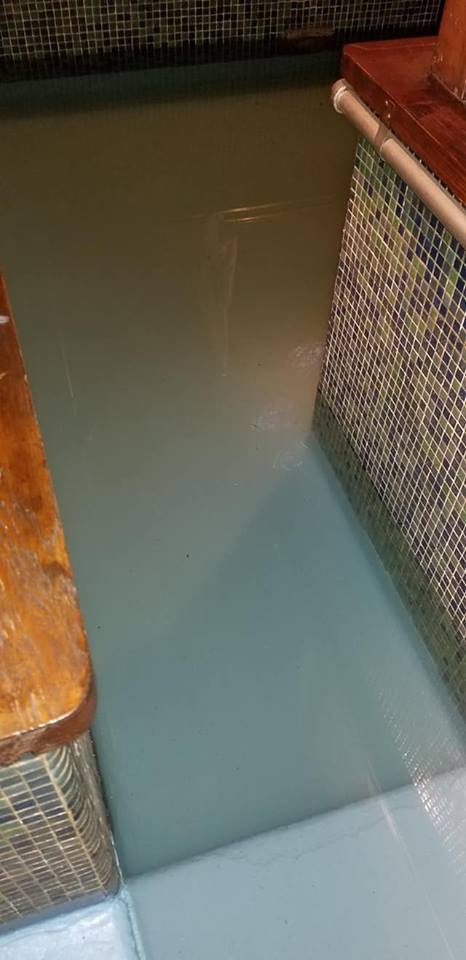
And then were Baptized Thomas Gold, Thomas Osbourne, Edward Drinker, John George and joyned with Richard Goodall, William Turner, Robert Lambert, Mary Goodall, Mary Newell who had walked in that order in Old England
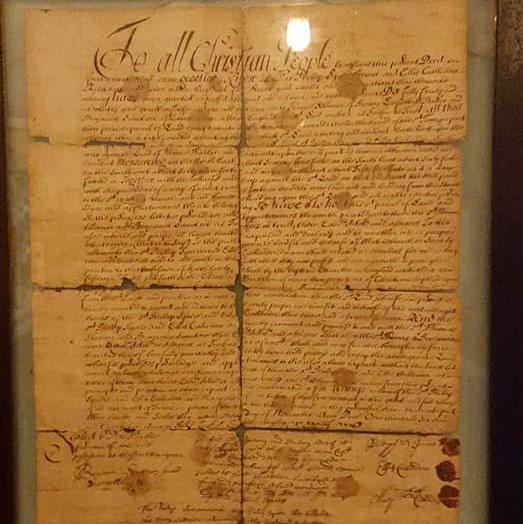
It was not until 1678 that the First Baptist Church of Boston endeaverd to build a meetinghouse. Until that time, the church met in various houses, such as that of Pastor Goold on Noddles Island (now part of East Boston & Logan Airport.)
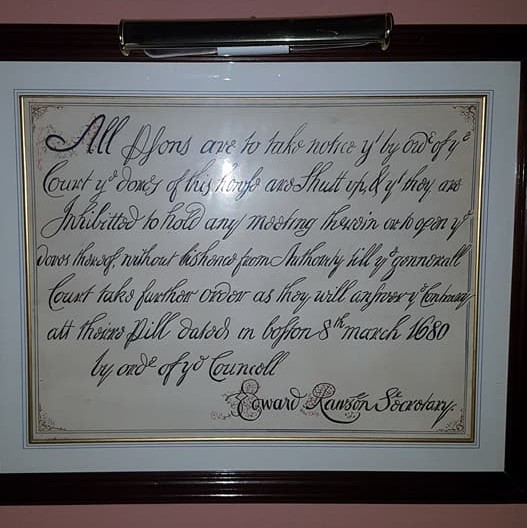
At that time, opposition to the Baptists was great. In spite of having disguised the meetinghouse as a brewery, the church doors were nailed shut on March 8, 1680, by order of the General Court (legislature) of Massachusetts. Instead of meeting in their meetinghouse, the intrepid congregation gathered outside in the harsh New England March.
It was not until 1683 that First Baptist Church of Boston received recognition by a church of the Standing Order. Second Church required a letter of dismissal for John Farrand [possibly a scibal error for John Farnham] from the elders of First Baptist Church when he returned to Second Church.)
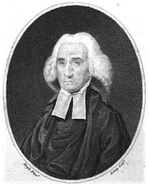
The Reverend Doctor Samuel Stillman holds the distintion of serving as Pastor for the longest tenure (1764-1807.) Rev. Stillman was the first non-established minister to preach before the General Court of Massachusetts (1779) in which he advocated the separation of church and state as well as the abolition of slavery. Later, he was called upon to serve as chaplain to the Continental Congress. It was Rev. Stillman who had the honor of making the final speech at the Massachusetts Convention for the Ratification of the Federal Constitution (1787.)
In 1771, it was decided that it was time to build a new meetinghouse "nearly sixty feet square." Durring the occupation of Boston (1775), this meeetinghouse was used first as a barrack and later as a hospital by the British troops.
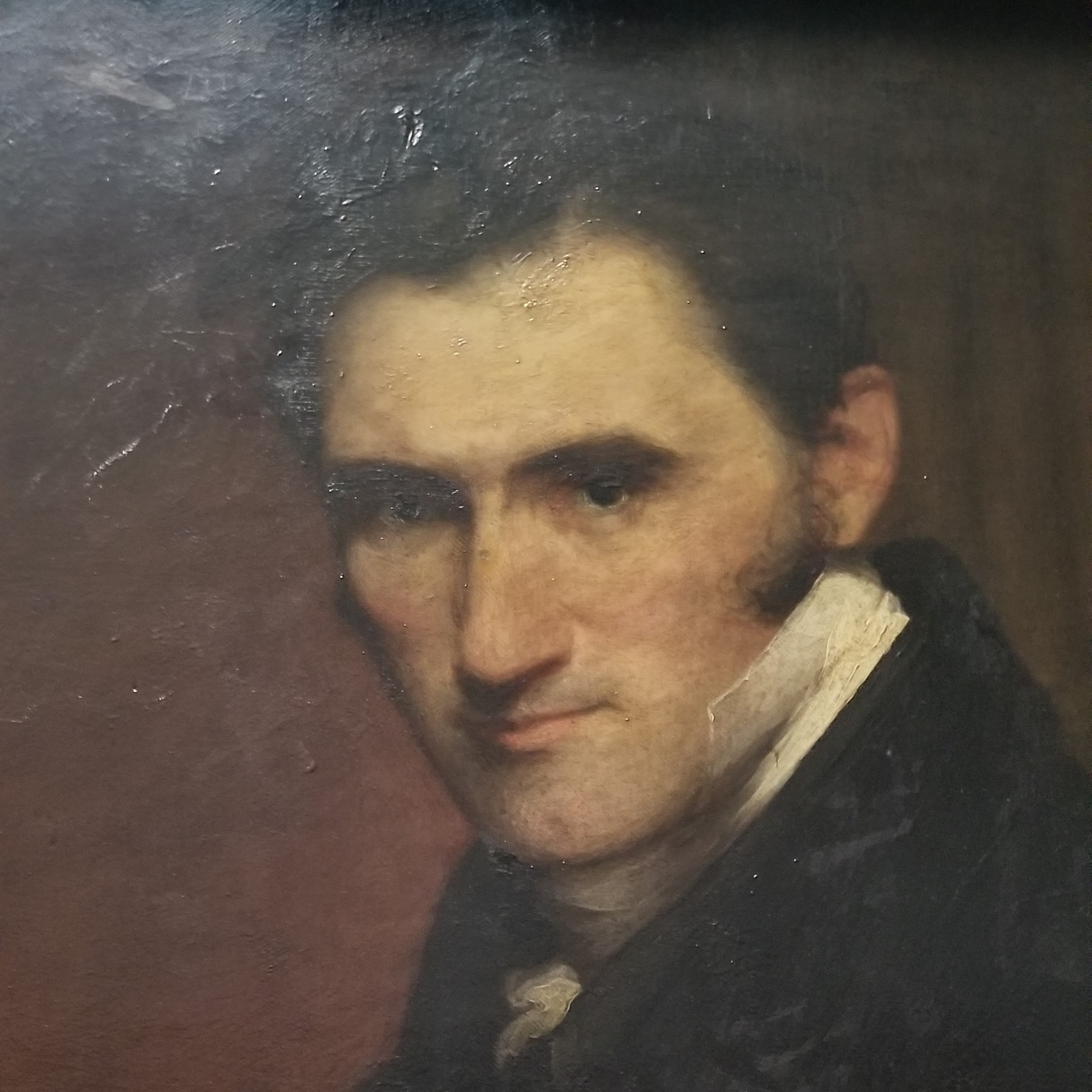
From 1821-1826, Rev. Francis Wayland, Jr., served as Pastor. It was while he was Pastor (in 1825) that the Newton Theological Inistitute (now part of Andover Newton Seminary at Yale University) was founded. Rev. Wayland woud later serve as president of Brown University. He was also the President of the Triennial Baptist Convention at the time of the vote on slavery which divided Northern and Southern Baptists.
In 1829, First Baptist departed from the North End of Boston for a new meetinghouse which was located at about the location of what is now the Haymarket Station of the MBTA. This meetinghouse was constructed of brick and contained 138 pews, costing in total about $45,000. It was here that, for the first time in its history, the church had the convenience of an indoor baptistry.
While at this location, the Rev. Rollin Heber Neale began what would prove to be the second longest pastorate (1837-1877) in this history of the First Baptist Church of Boston. In 1845, at a business meeting of the church to select a deacon, "it was voted that the sisters be requested to ballot with the brethren. " This is the first record of the sisters voting formally and equally with the brethren.
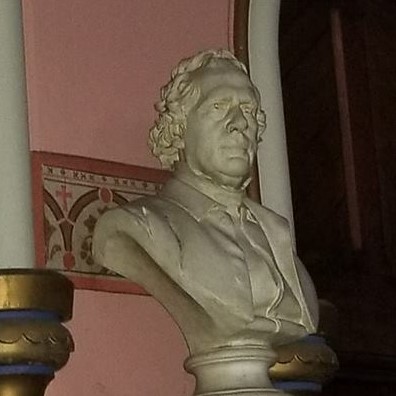
From 1854-1877, the First Baptist Church of Boston would meet in a Gothic revival meetinghouse close to the top of Beacon Hill. This meetinghouse was ninety-four feet long by sisty-six feet wide. It had one hundred and fifty-eight pews and seated about 1000 persons. In this building the church celebrated, in 1865, its Bicentenial. The building was later sold to Boston University for use as a chapel.
in 1877 it was decided to unite with the Shawmut Avenue Baptist Church. Shawmut Avenue Baptist Church was located in the then new South End and had been founded, in 1856, as the Thirteenth Baptist Church of Boston. This merger resulted in renewed energy for ministry. Soon after joining together, the Brattle Square Unitarian Church became availlable for purchase.
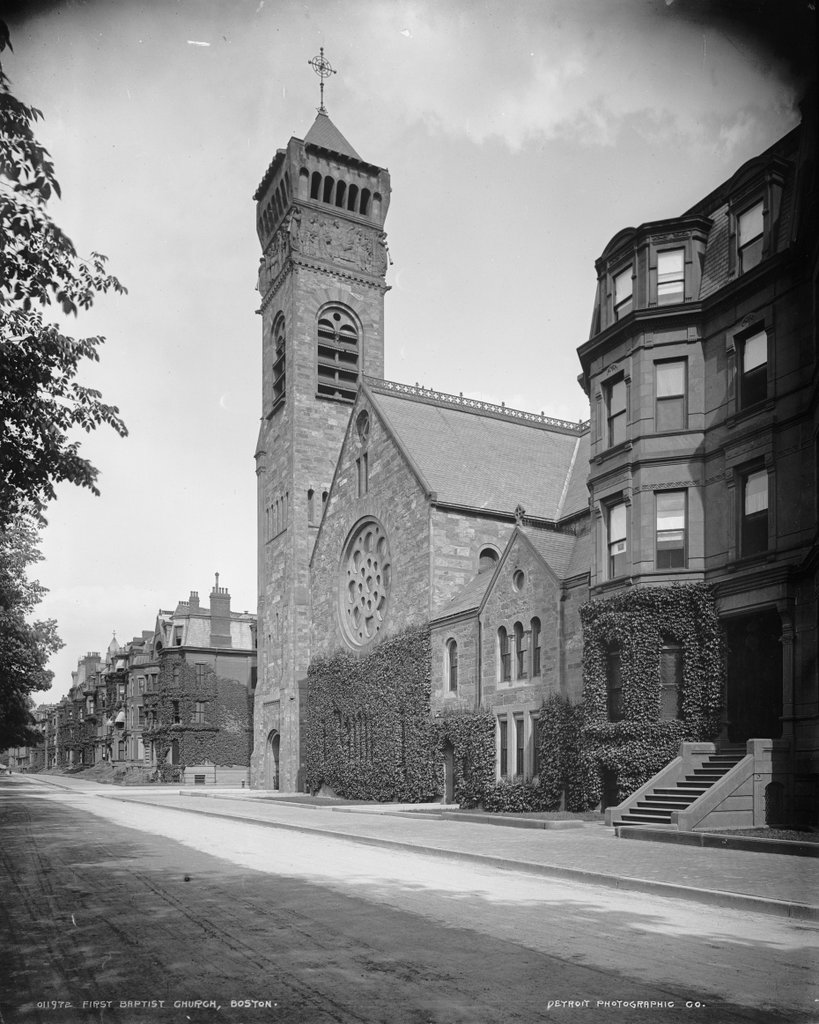
The Brattle Square Unitarian Church had built a new church ca. 1869-1875 in the Back Bay of Boston. The architect H.H. Richardson was hired in 1869 to design waht would be his third church. Most notable is that this is the first example of what would become known as Richardson Romanesque (a later example of which is Trinity Episcopal Church in Copley Square.) High up upon the tower were carved a frieze by Frederic Auguste Barhtoldi, best known for the Statue of Liberty (see TOWER RESTORATION page for more information.) Due to a variety of facts, the Brattle Sqaure Church would only use this meetinghouse for fifteen months.
In 1882, the First Baptist Church of Boston was able to obtain this amazing building for $100,000. At that time, with the oversight of H.H. Richardson, balconies were added to the sanctuary, new pews were installed, and the platform area was modified The parish hall, know known as Wayland Hall, was also constructed at this time.
In 1915, with clear recogntion of the contributions of the Shawmut Avenue Baptist Church, First Baptist was able to celebrate its 250th Anniversary. The picture at left shows the former Pastors who were present at the 250th anniversary.
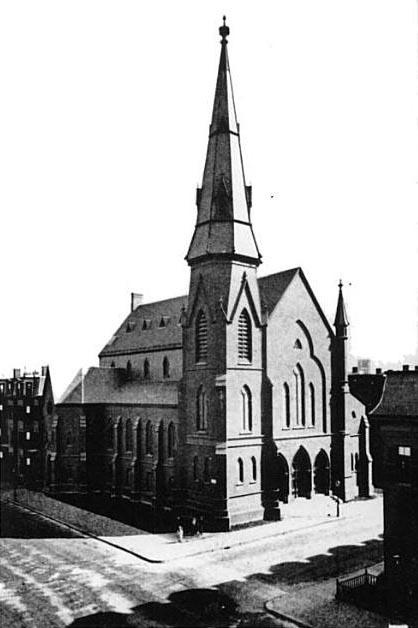
In 1920, First Baptist again joined with another congregation: this time, with the Warren Avenue Tabernacle. Warren Avenue Tabernacle was, itself, the result of an earlier merger of the Bowdoin Square Baptist Tabernacle (founded 1840) and what had been the Baldwin Place Baptist Church (originally known as the Second Baptist Church of Boston and founded as a division from First Baptist in 1743.)
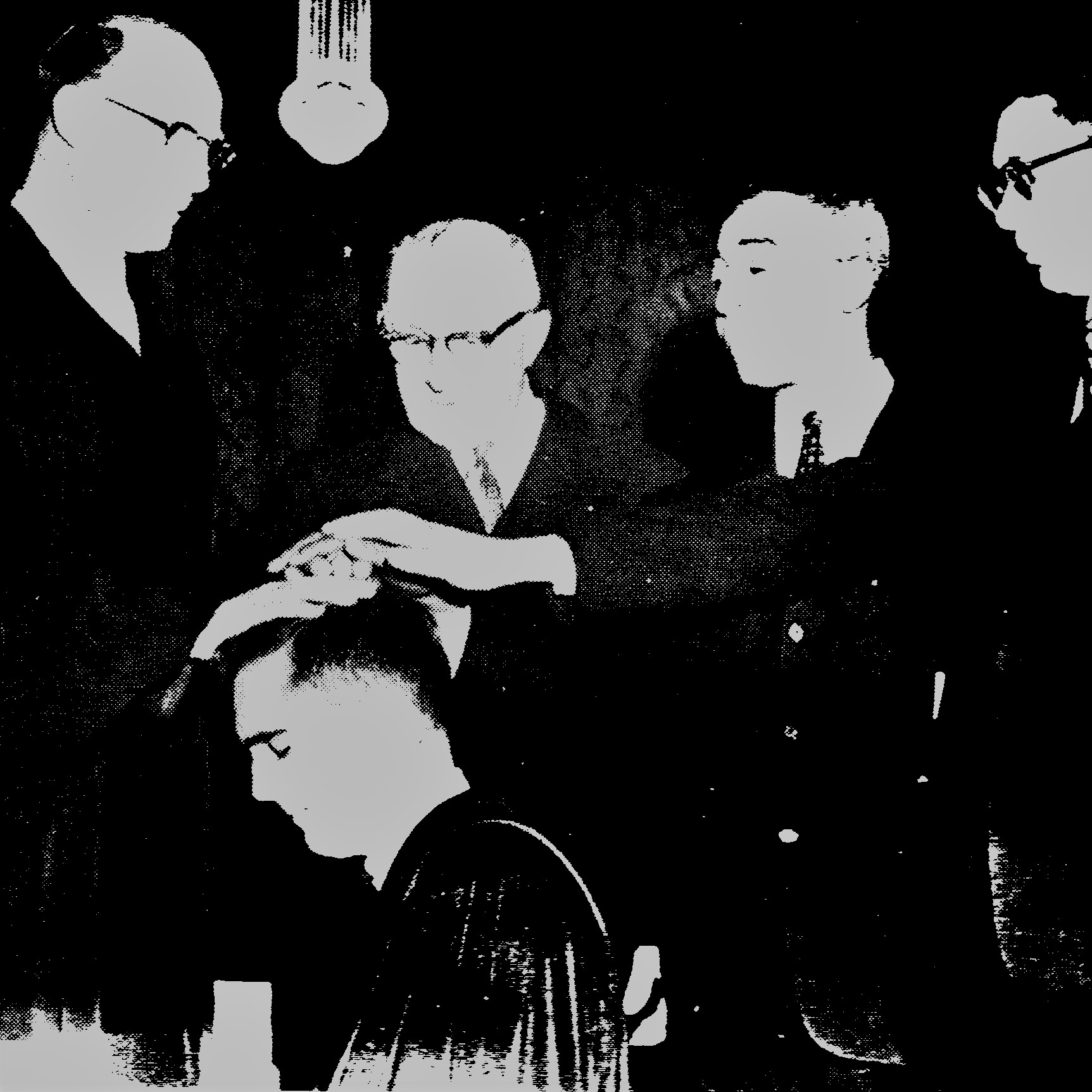
One distinct blessing which resulted from this merger was that welcomed the Chinese Sunday School which had been a part of the Warren Avenue Tabernacle. Many participants in the Chinese Sunday School became leaders in this church. By 1965, when the church celebrated its tercentenial, the leadership of the First Baptist Church was clearly diverse and diversified (as evidenced by the Deacons at the ordination of Eugene Dawson seen at left.)
In 1990, the First Baptist Church of Boston celebrated its 325th anniversary. Seen at right, from left to right, are former Pastors Rev. Harry Kruener (1940-1947), Rev. John U. Miller (1947-1956), Rev. Edward Gunther (1958-1961), Rev. Charles Griffin (1961-1970), and Rev. J. Walter Sillen (1971-1981) together with the then Pastor Rev. Milton P. Ryder (1982-2001.) Out of camera range was the Rev. John R. Odams, who became the 30th Pastor of the First Baptist Church of Boston in 2016.

While we no longer use the Mill Pond in the North End of Boston (which is now under steel and concrete), we baptise believers in Christ by immersion.
October 21, 2018
February 10, 2019
February 17, 2019
June, 1990
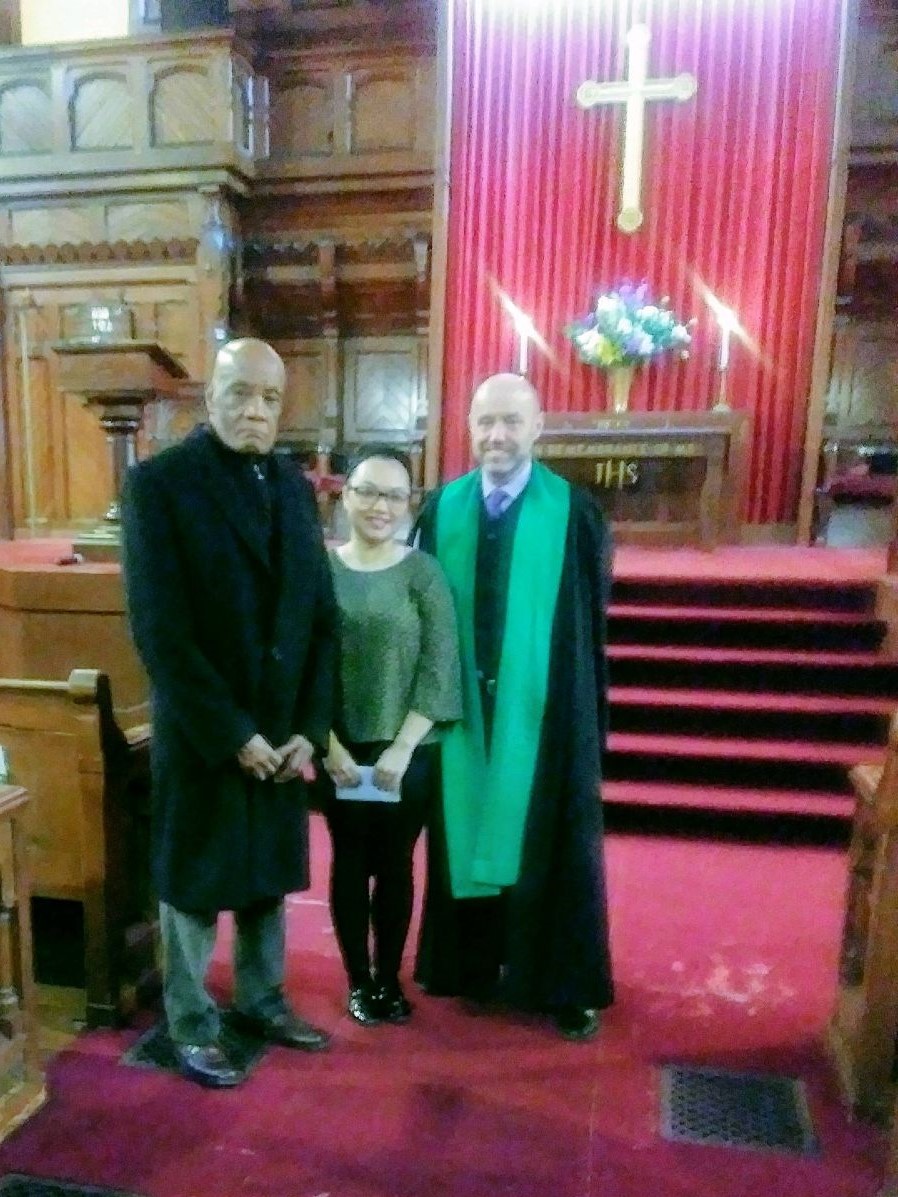
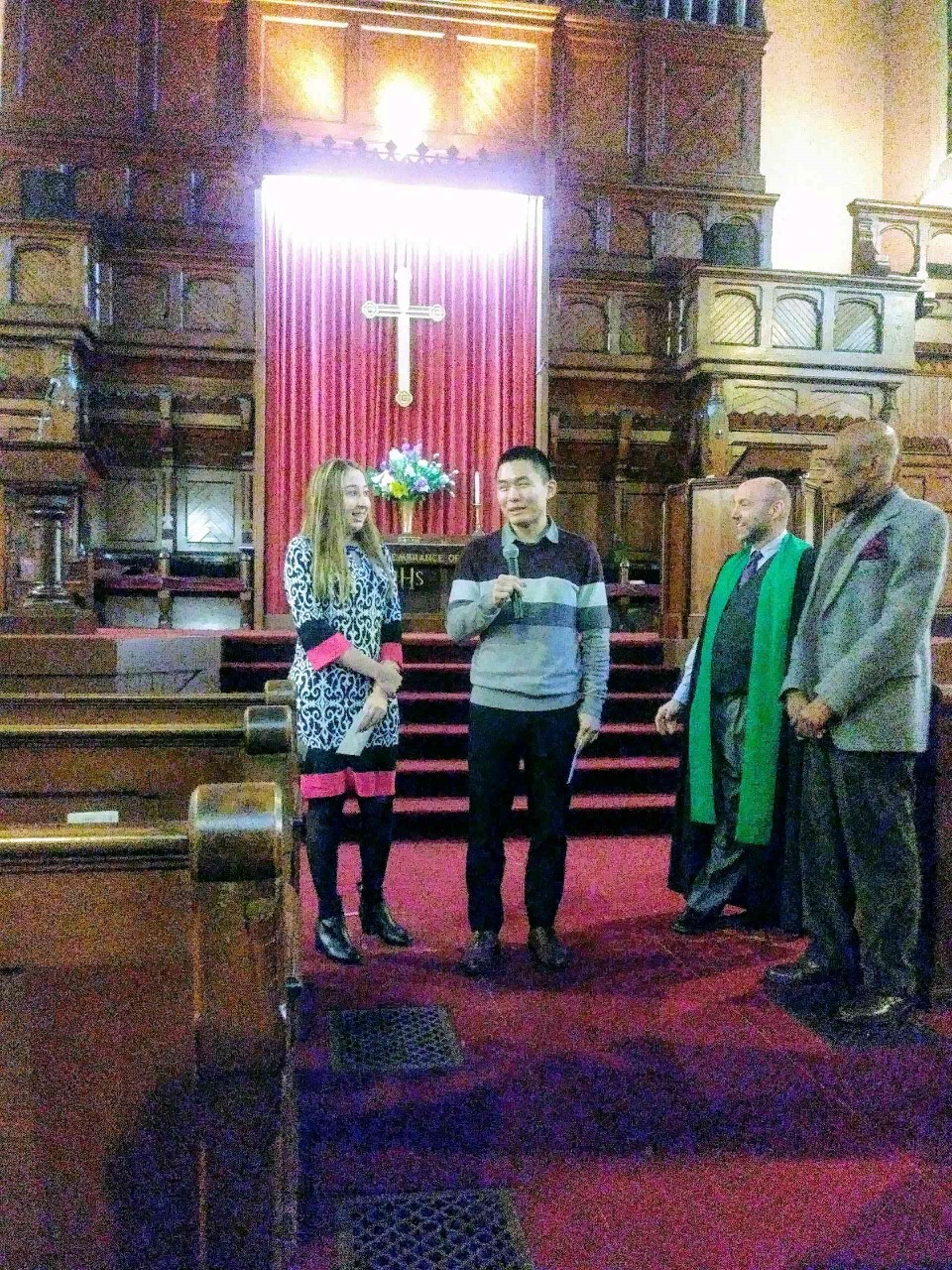
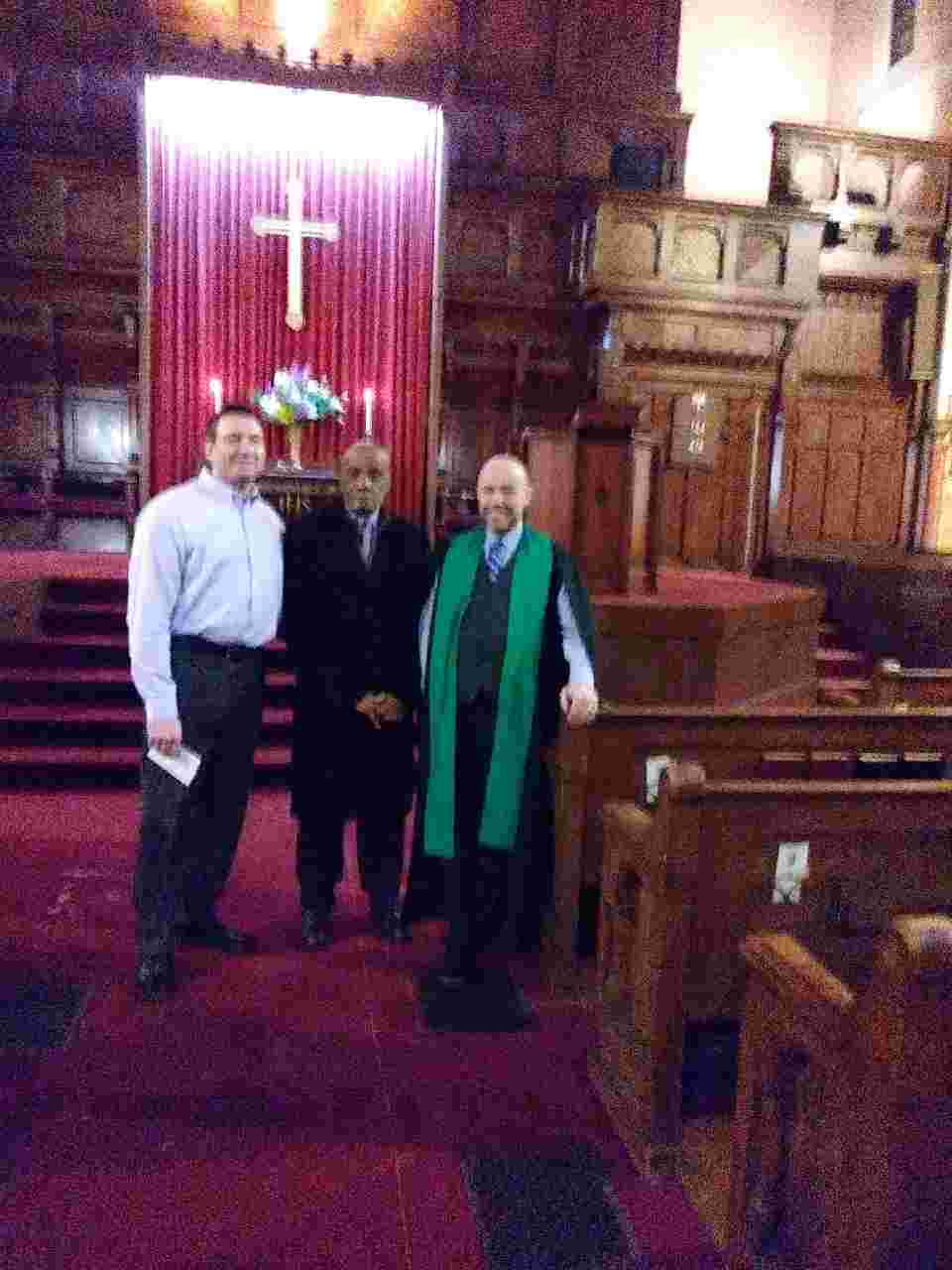
February 24, 2019
Church and pastoral records are on deposit at the Massachusetts Historical Society in Boston for First , Second , (aka Baldwin Place , aka Warren Avenue); Bowdoin Square Tabernacle, and Shawmut Avenue (fka 13th) Baptist Churches. Additonal archives may be found at the American Baptist Historical Society at Mercer University in Macon, Georgia.
